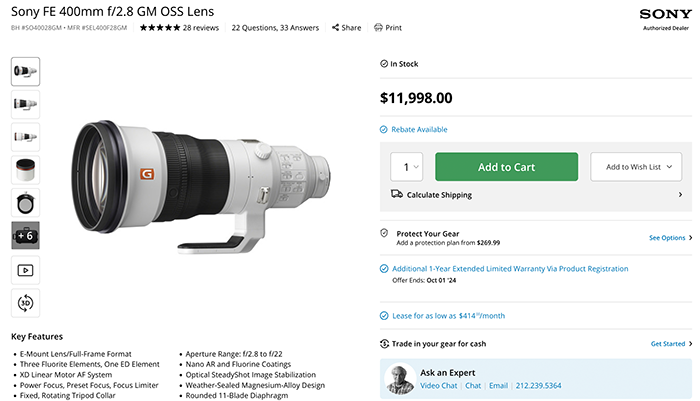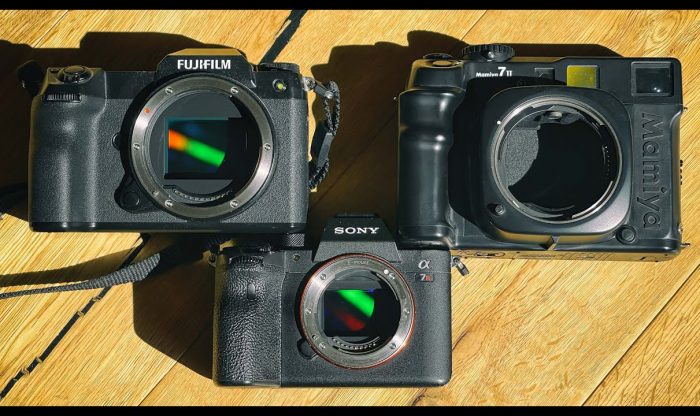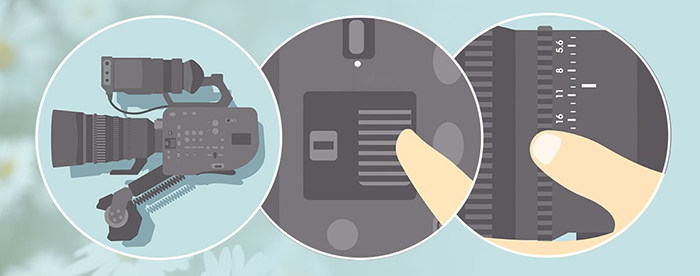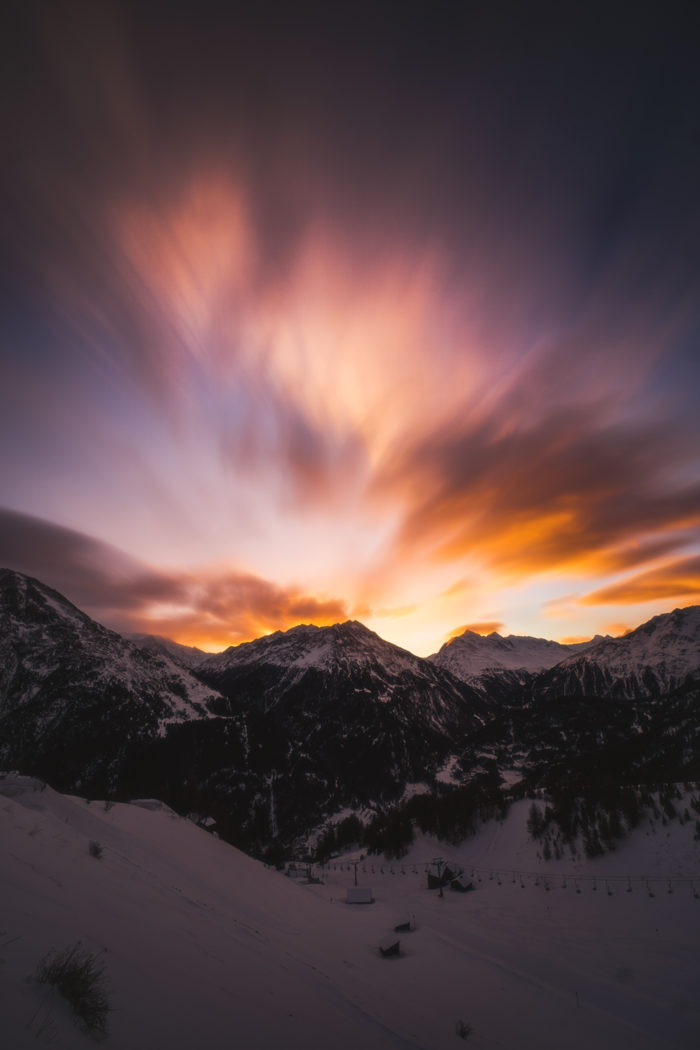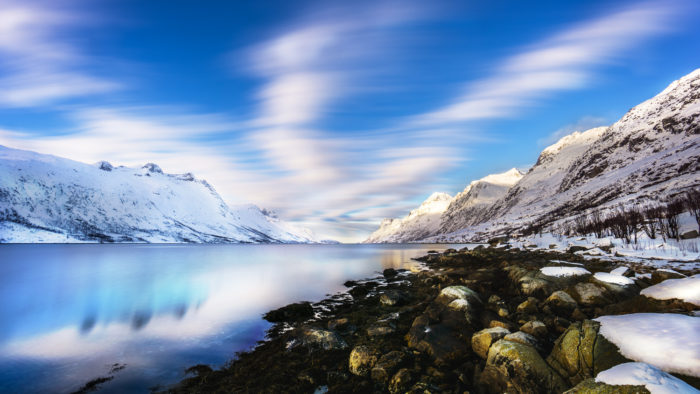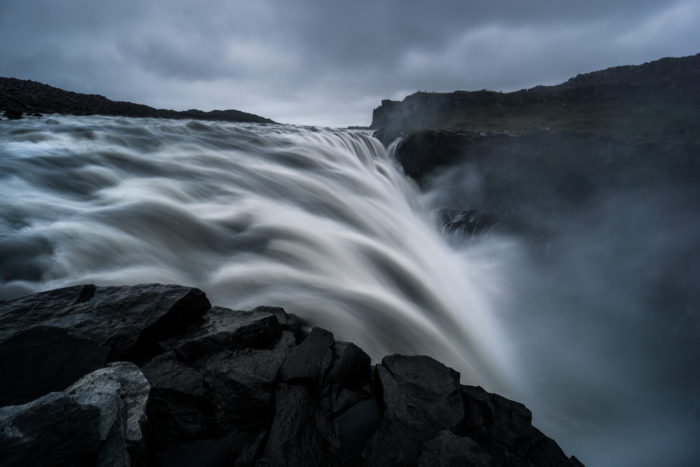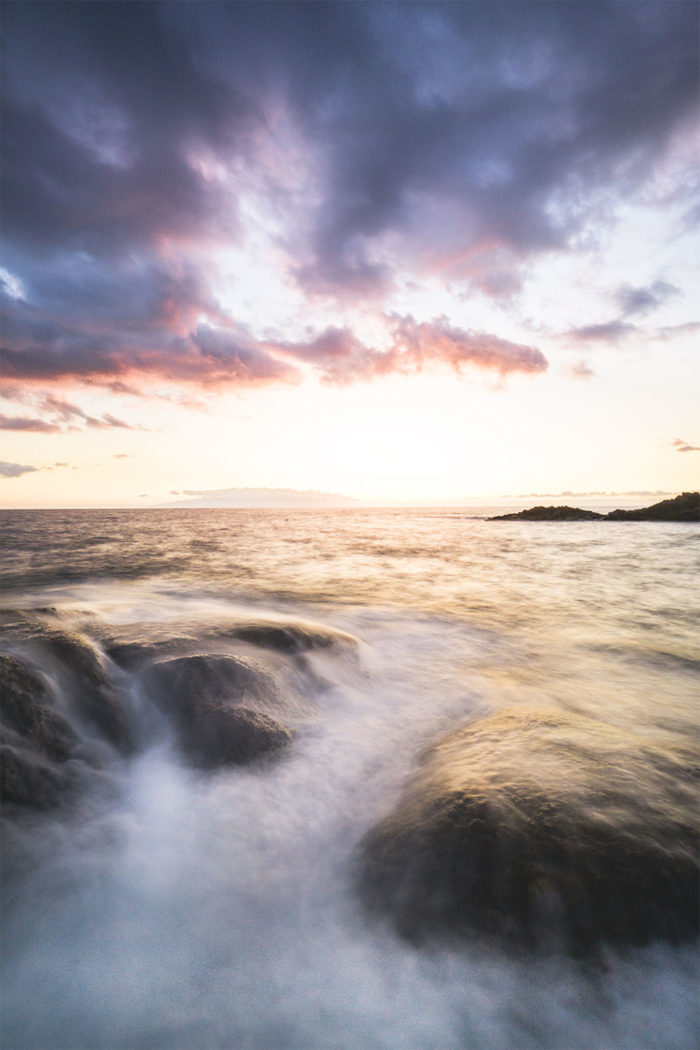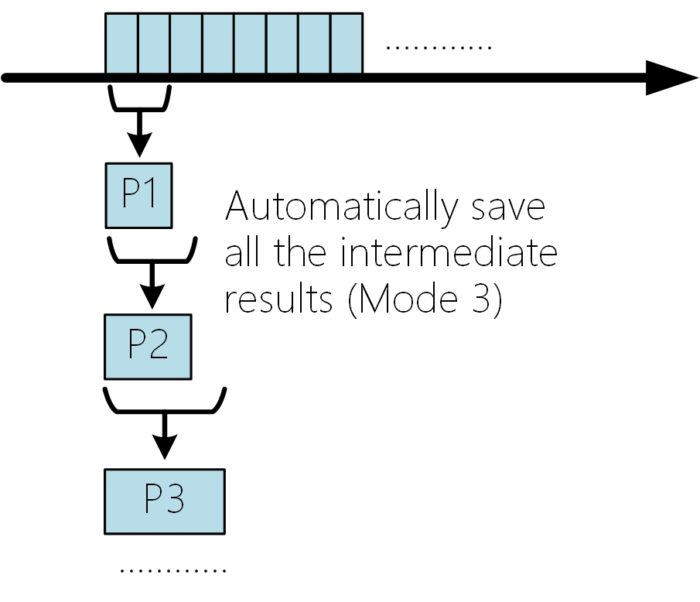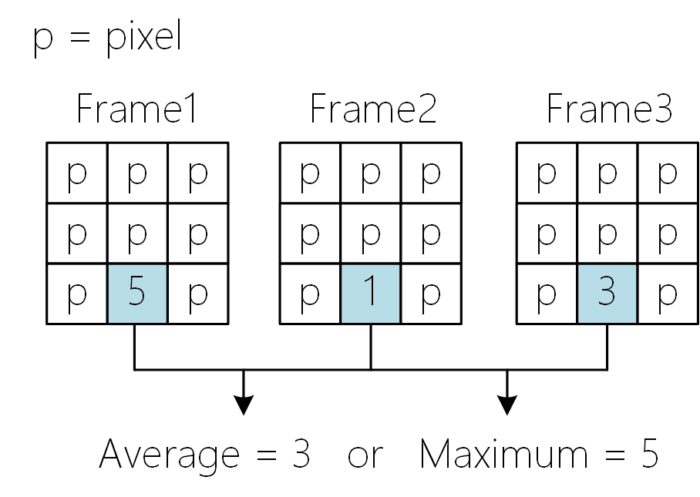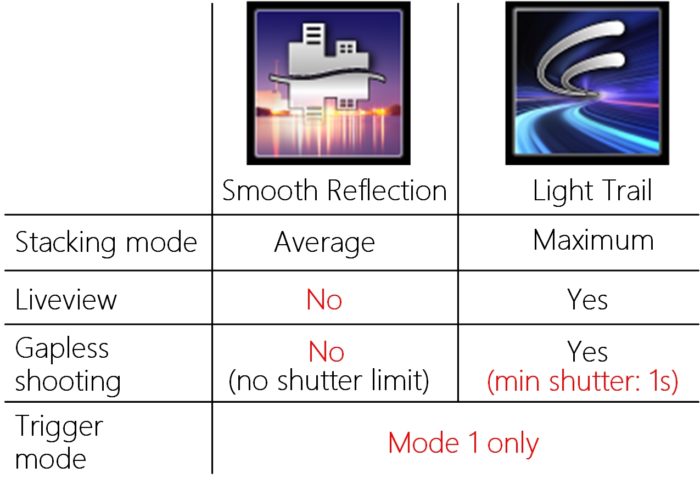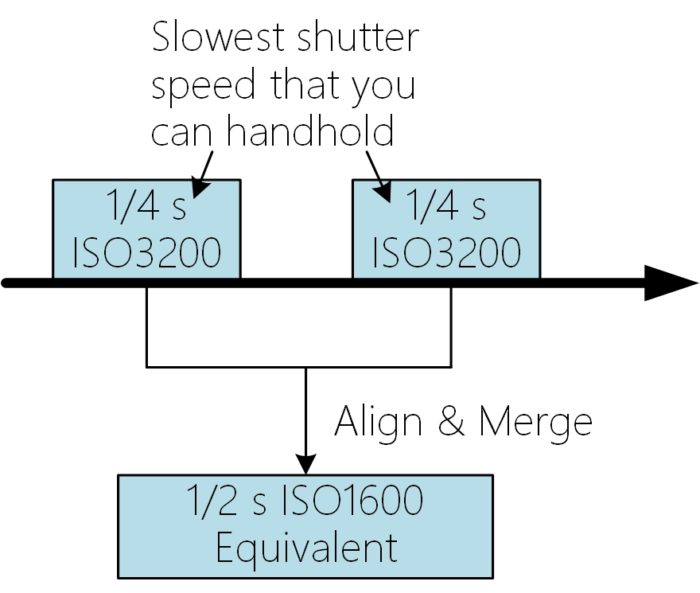The first Playmemories APP that Sony should bring back, and the potential of in-camera photo stacking
This is a guest post from “Y.”:
–
The first Playmemories APP that Sony should bring back, and the potential of in-camera photo stacking
Author: SonyAlphaComplain
Most of Sony’s Playmemories APPs won’t be missed by me too much because I can easily find a workaround. Sometimes the workarounds are even better. But there is one killer APP that I found irreplaceable: Smooth Reflection. For those who are not familiar with this APP, here is a short introduction.
What does it do?
Smooth Reflection uses a technique called photo stacking to emulate the effect of long exposure. Traditionally, we need a ND filter to do the job in daylight since it’s difficult to reach long exposure time:
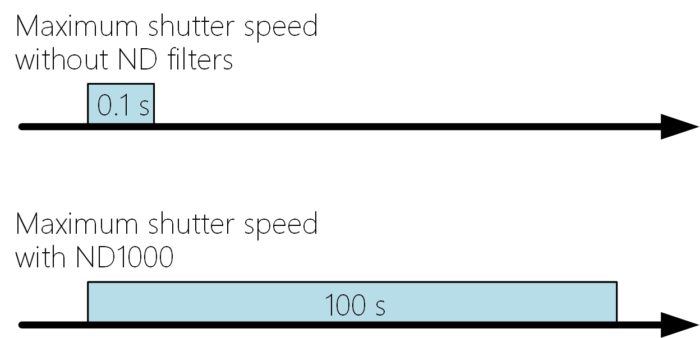
And this is how the photo stacking works:
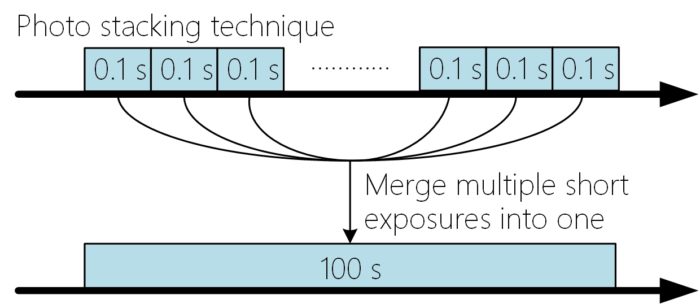
Here is a video demonstration from Sony:
https://www.youtube.com/watch?v=sPXlUOkJ3Fw
What are the advantages of photo stacking?
In certain situations it is much better than real ND filters for the following reasons:
– Better image quality. If you stack 100 photos shot with ISO100, you get EXTREMELY CLEAN photo which is equivalent to the image quality of ISO1! Yeah no typo there. It virtually eliminates any random noise, so only the fixed-pattern-noise is left (such as banding). I always underexpose my photos by one or two stops when using Smooth Reflection because the dynamic range is just insane.
Also, real ND filters add extra vignetting to UWA lenses no matter how good the filters are. It’s just inevitable. The cheap ones could also cause some annoying color shift and more flare.
– Pack light and ease of use. No need to carry and screw on/off your ND filters anymore (but I still keep a ND64 for some reasons that I will explain later).
– Save a lot of money. ND filters could be very expensive depending on its optical quality and the size of your lenses.
– The exposure time you can get is very flexible, because the number of photos you stacked together doesn’t affect your exposure value at all. So it’s kind of like a variable ND, but real variable NDs can cause extra issues for UWA lenses and the color shift is usually worse. I gave them up a long time ago.
– The exposure time is almost unlimited in real use, while even a powerful ND1000 can only provide around 30 seconds in daylight if you stay above F16 to handle the diffraction. Even if you are OK with F64, it won’t get you too far.
What are the advantages of Smooth Reflection?
Theoretically you don’t really need Smooth Reflection to do photo stacking. Photoshop can also handle the job. But there are several important reasons that make the in-camera solution invaluable:
– Stacking a lot of photos in photoshop takes FOREVER because Adobe sucks (OK my computer also sucks), while it’s almost instantaneous in the APP.
– You can see the result immediately after the final shot. Those who use photoshop can only use their imagination until they got their hands on a computer.
– The APP generates only one final photo instead of hundreds or thousands of unstacked photos. For those who have limited SD card capacity and travel without a laptop, this could be a HUGE advantage. Just a reminder: 100 RAW files from A7RII consume more than 4GB.
– Also good for those who didn’t subscribe Photoshop.
Basically it saves a lot of time and money and trouble, which is why I couldn’t be happier to spend 5 dollars on it. But that’s not all of it. Smooth Reflection still has a huge room for improvement, which I will talk about later.
Is there any shortcoming?
Depends.
The biggest issue is that your camera needs some time to readout and process the data, so there could be a short interval between the shots:
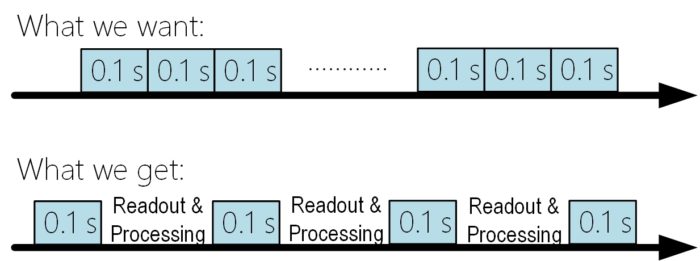
For Smooth Reflection, this interval is around one second (give or take) regardless of your shutter speed. The consequence is obvious: the motion you captured is no longer continuous. Let’s assume that there is a car running in the dark and you want to capture the light trail, this is what happens:
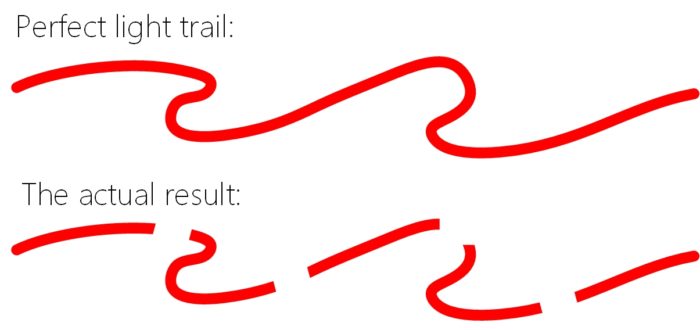
But if your exposure time is long enough (let’s say more than 10 seconds) with slow subjects, Smooth Reflection is a real charm. Here are some photos I took:
It can’t handle a relatively short exposure like this because of the one second interval:
That’s why I still have a ND64 filter. There are other benefits of keeping a less-powerful ND:
– Shoot F1.2 portrait in daylight using a camera with only 1/4000 maximum shutter speed.
– Also great with time lapse and video works in daylight.
Smooth Reflection also heavily abuses your mechanical shutter although my A6000 with 50K+ actuations is still well and alive.
Personally I found that Smooth Reflection + ND64 is a great combination that is capable of satisfying all my needs so far. And of course you can use them together to get even smoother image and reduce the number of shutter actuations. This APP is one of the things that make Sony cameras so unique for landscape works, so I really want it back on A7RIII (also RX10IV and A9)
Not only that I want this feature back, actually I also want Sony to make it better, because Smooth Reflection hasn’t fully exploited the potential of in-camera photo stacking. It could be an ultimate weapon for many types of photographers.
1: Long exposure with liveview, a real game changer
As I said, one of the advantages of Smooth Reflection over Photoshop is that you can playback the final result immediately after all the photos are stacked together. But that’s not all of it, actually it is possible to provide liveview DURING your long exposure, so you can see how your photo gradually changes.
This is important because sometimes longer shutter time is not necessarily better. 10 seconds could yield a better result than 50 seconds, especially when the environment or light is changing fast, and ordinary people can’t really predict the future. A liveview feedback allows users to determine when to stop their long exposure (and unlike the conventional way, your photo won’t be underexposed).
For the current Smooth Reflection APP, if you are not happy with your end result, all you can do is to change the settings and start it all over again. But your best light or moment may already be gone.
Actually, this feature is already available in many Olympus models (there are lot of things that Sony should learn from Olympus, including the Pro Capture Mode in E-M1II. It’s perfect for a speed monster like A9). Some of you may be surprised that Sony has also implemented this feature. Check out this video:
https://www.youtube.com/watch?v=COAb3II1PSs
Pretty cool, huh? Light Trail is supposed to be another killer APP, but for some mysterious reasons that I couldn’’t understand, it only supports A5100 and A7S. Not even A7SII. So much for its epicness.
Light Trail is also based on photo stacking, but there are some important differences that I’ll talk about later.
2: More flexibility on exposure time
So now we have liveview during the long exposure and can decide when to stop it. But is it really that easy to make the call? Let’s say I’m already happy with a 5 seconds shot now. It’s good enough. But if I waited a bit longer, would a 20 seconds shot be even better? Well, there are very simple solutions for that. In my opinion, Sony should provide all the following trigger modes for more flexibility:
Mode 1:
You can stop the process in the middle by pressing the shutter. This is how Smooth Reflection works.
Mode 2:
When you’re happy with the current result, you can save it without ending your exposure. Since touching the camera is not a good idea during a long exposure, touchless shutter should be provided. So you can use the real shutter to trigger mode 1 or the touchless shutter to trigger mode 2.
Mode 3:
In this mode I don’t have to monitor my screen all the time, I can just find a warmer place, drink some beer, and come back later to decide what’s best for me. Since Sony has finally implemented thelong awaited photo grouping and protection functions, it’s very easy to delete all the unwanted photos to clear some spaces in the SD card.
Mode 4:
You save all the unstacked photos and photoshop them later by yourself. Not only that you can decide when to stop, but also when to start, or even take few frames away because some dude was standing in front of your camera. Maximum flexibility. Some in-camera post-processing ability would be even better. Also, this can be used for time lapse if some extra setting like time interval are provided.
3: Average value vs Maximum value
Light Trail and Smooth Reflection use different stacking modes. For Light Trail it’s called Maximum value, and for Smooth Reflection it’s Average value. They are both supported by Photoshop.
Maximum value mode is good for:
Fireworks, light trails, star trails, thunders.
So basically all the night stuff. But it produces weird results in some situations. That’s when the Average mode becomes handy.
Sony should provide both methods for their customers.
4: Gapless stacking
Another difference between LT and SR is that LT can produce continuous light trail because there is no time interval between shots. As I said the camera needs some time for readout and processing, so this gapless shooting ability comes at a price: you shutter speed is limited. For LT this is around one second. Olympus also has the similar restriction.
The funny thing about SR is that no matter how you change your shutter speed, there will always be a time gap. Personally I don’t think it’s a big deal, but it would be great if Sony can implement both the gapless mode (with shutter speed restriction) and the non-gapless mode. The shutter speed limitation can be easily overcame by those who have a ND64. Combined with the gapless mode, it becomes perfection.
To summarize it up, Sony has two APPs for stacking:
And I want Sony to combine these two programs into one and add new trigger modes to make it an ultimate weapon.
I know this is already a very wild pipe dream but the awesomeness of in-camera photo stacking doesn’t end there. Actually, Sony also has another kind of in-camera stacking.
5: Digital stabilization
Photo stacking can also be used as digital stabilization for still shooting. You can handhold to shoot multiple frames, automatically align them, and use the averaging mode to merge the photos:
Sony has already implemented this function which is called multi frame noise reduction (MFNR). It shoots 4 pictures which is equivalent to 2 stops of extra stabilization in addition to the IBIS/OSS. But unfortunately, MFNR only supports JPG files, which makes it useless for many people. When I need to use MFNR I just shoot RAWs until the buffer is filled and stack all of them in Photoshop. 16 shots at ISO 3200 become ISO 200 quality, who doesn’t love that? But it would be nice if the camera can do all the work for me, so I was hoping that in the future Sony will finally add RAW support for MFNR. But in the contrary, they deleted this feature at some point, just like what they did to Playmemories APPs. Gone in the wind.
It should be easier for Sony to align RAW photos these days because those A7 cameras with IBIS inside also have gyroscopes (and lenses with OSS have that too). The reading of these sensors can help aligning the photos easily.
There is even more…
Alpha 9 has a crazy sensor with integrated memories and probably 12 AD converters for each column of pixels. This enables new possibilities for on-sensor photo stacking instead of in-camera stacking, and more powerful features can be implemented. But let’s just call it a night since this post is already too long.
Anyway, I’m not sure what I’ve been smoking to ask for so much new features from Sony, a company famous for announcing a camera and then just disappear the next morning. At this point, the bottom line is that I want the original Smooth Reflection back. Please please please. And it should be pointed out that those smartphone manufacturers such as Google have put a lot of efforts in photo stacking, deep learning and other computational photography tricks. They will eventually close the gap between larger sensors and small sensors, if those who have larger sensors decided to do nothing.
